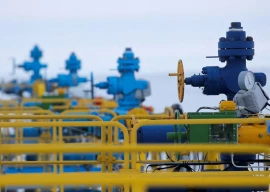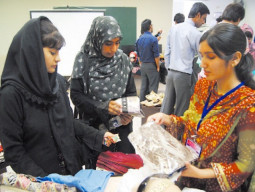
Has Imran's govt stabilised Pakistan's economy?
Stabilisation is achieved when all economic indicators perform at optimum level
ISLAMABAD:
The Pakistan Tehreek-e-Insaf (PTI) government has completed two years of its rule. Its economic performance is under discussion.
Many economists suggest that the government has achieved its first goal, maintaining economic stability in Pakistan. In this article, I will argue that the economy is still in turmoil and stability is far away.
Stabilisation is achieved when all key macroeconomic indicators start performing at their optimum – growth-facilitating – level. One significant measure is the rate of inflation and the other is the interest rate.
Both are connected. When inflation is high, the interest rate should also rise to compensate for the time value of money and maintaining monetary discipline in the economy. In Pakistan, the Consumer Price Index (CPI) was recorded at 8.2% in August 2020. Although it is the lowest in the last three months, expectations are high that the CPI will rise in the coming months.
The key interest rate is at 7%, which is arbitrary since the State Bank of Pakistan (SBP) is keeping it at a low level to facilitate post-Covid recovery in the market. This negative interest rate is, in fact, a signal that the monetary policy is still not disciplined and sooner or later the SBP will revise its monetary policy goals.
Another indicator of stabilisation is the fiscal policy, which deals with spending and taxing accounts of the state. The fiscal deficit in the last two years was more than 8% of gross domestic product (GDP), the highest in the last four decades, even though the government is maintaining the lowest public spending.
I do not think the PTI government will keep retaining this lowest level of spending since this policy is hurting its popularity in public.
Current account
The fourth major proxy of economic stability is the current account balance. At present, Pakistan’s current account balance is in surplus. But two main factors are responsible for manipulating its present level.
One is the low level of imports due to the uncertain economic situation caused by Covid-19, volatile exchange rate and ambiguous economic policies of the present government since 2018.
The second is remittances which are increasing not due to any efficiency of the present government. Mainly, migrants send more money to their families when they find them in more financial difficulties or they decide to return to their home countries.
Dependence on remittances is like reliance on foreign markets and not on the domestic economy. It is evident that in the last two decades the more Pakistan relies on remittances, the more decline we see in exports. The reason is that the remittances are providing key support to the current account balance.
This reduces incentive for the government to remove those policy barriers which hurt productivity, innovation and competence in the domestic market. Without a strong competent market, Pakistan cannot boost its exports and sustain its growth rate at a more than 5% level.
One major barrier is the import-restricting protectionist policies. The economic literature is very clear in explaining that free trade policies boost exports and economic activities in a country.
Exchange rate
The fifth major factor determining economic stability in Pakistan is the currency exchange rate. PKR against USD is not yet stable, even though remittances inflow is at its highest level and imports are significantly low.
On March 7, 2020, one USD was equal to PKR 154.30 and on September 5 it was recorded at 165.95. If we imagine a situation when imports will bounce back, will the current exchange rate sustain stability? I do not think so.
As I have talked to many businessmen in Pakistan, most people expressed major concern over exchange rate volatility, and rising gas and electricity tariffs.
Declining tax-to-GDP ratio and increasing government debt levels are also showing that government account books are not yet stable and macroeconomic instability still exists. Since this government came to power, it has failed to deliver clear policy signals to the business community, which is the main challenge. Businessmen have the lowest level of confidence in the prevailing situation.
The decline in GDP growth rate over the last two years is mainly due to this and this lack of confidence is not leaving the country until policy goals and government preferences become obvious.
The writer is a research scholar at PRIME Institute (Islamabad) and doctoral researcher at the Brunel University, London
Published in The Express Tribune, September 14th, 2020
Like Business on Facebook, follow @TribuneBiz on Twitter to stay informed and join in the conversation.















I fail to understand if this article was about sound economic policy or a robust fiscal/monitory policy. Until the writer decides, what is under discussion, nothing can make sense. Also, regretfully, there are multiple self conflicting statements here. The business community is unhappy because of input cost factors but that same business community is not happy to enjoy the lending bonanza that SBP is offering. If your definition of business community is a group of importers and inland distributions of cheap Chinese goods or used 2nd hand automobiles, then please come'on. Keeping low benchmark rate at 7% is a sin indeed, but under normal situations. This COVID-19 era is by no means Normal. And more abnormal still for a country living on alms from its friends. The world is facing massive contraction. Demand has all but vanished, everywhere. So the question now is not what or how to export, but who to export. For an industry massively at odd against the import mafia, what you can do to make it competitive. We have seen the wonders of free trade over the last decade. Without your own manufacturing sector, free trade is more like free ride, for others. If USA, the worlds largest and technologically superior economy has been unable to sustain the import euphoria vis-a-vis China, we must accept the reality too.